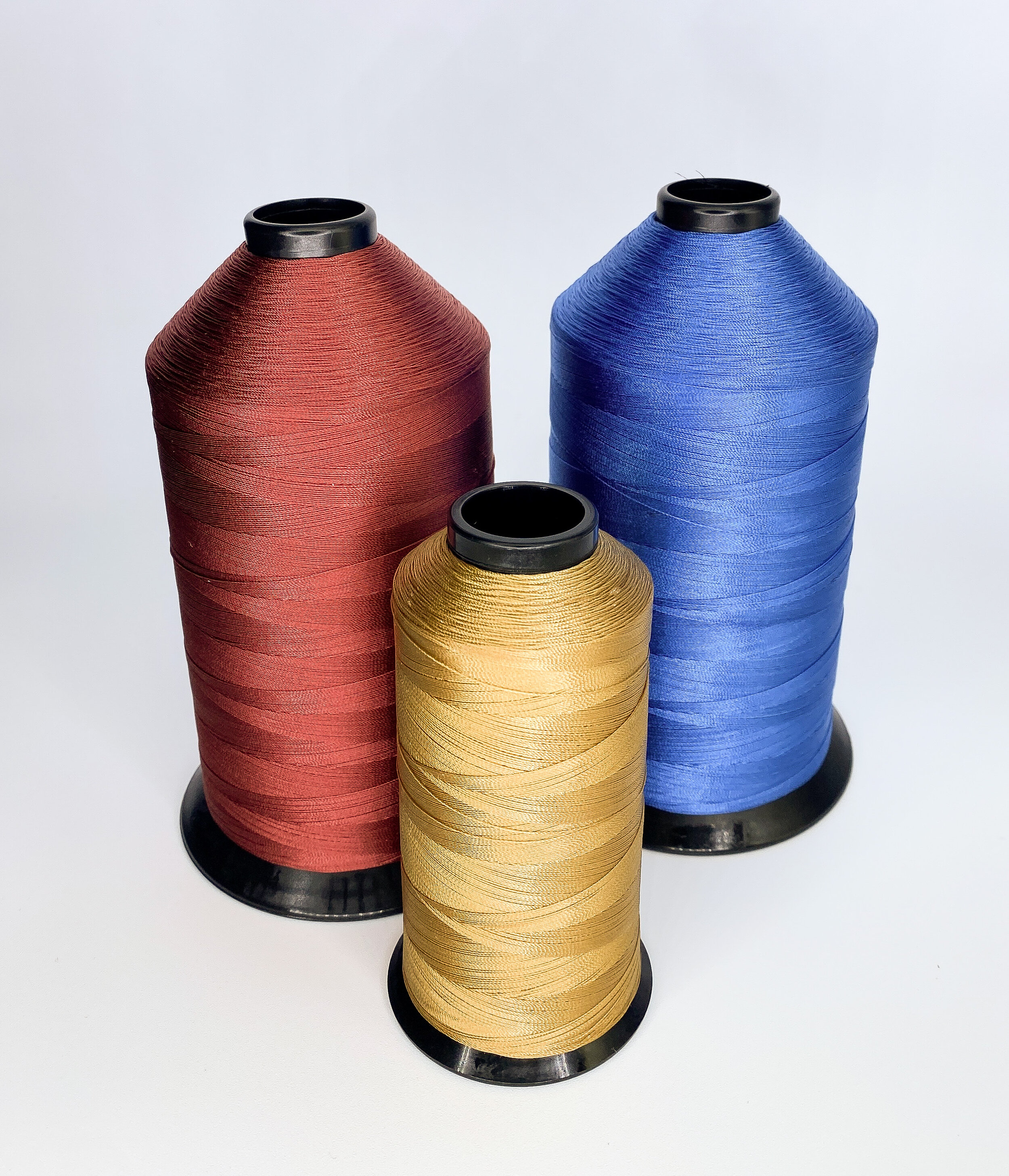NYLON
Nylon offers superior strength and excellent resistance to chemicals, mildew and abrasion. With UV inhibitors built into the yarn, Nylon is the logical choice for outdoor usage.
Eddington applies special sewing finishes to the thread to eliminate burning and breaking at the needle. For tougher sewing situations Eddington’s bond has been a proven performer. Our bond is applied to the thread under extreme heat. This allows the bond to become one with the thread and protects the thread under extreme sewing circumstances leaving the user with perfect looking seams.
Also available is right twist thread for double needle machines, water-repellent finishes, and non-silicone thread favored by the filtration industry. The thread is packaged on a 4 oz, 8 oz, 1 LB, 2 LB, and 4 LB KS or paper cones, braider tubes or pencil tubes.
NYLON SPECIFICATION SHEET
MIL SPEC A-A-59826 (VT-295E)
Effect of Heat: Sticks at 445° Fahrenheit. Melts at 485° to 500° Fahrenheit. Yellows slightly at 300° Fahrenheit when held for 5 hours.
Effects of Bleaches and Solvents: Can be bleached in most bleaching solutions. Generally insoluble in most organic solvents. Soluble in some phenolic compounds.
Effects of Acids & Alkalis: Unaffected by most mineral acids, except hot mineral acids. Dissolves with partial decomposition in concentrated solutions of hydrochloric, sulphuric, and nitric acids. Soluble in formic acids. Substantially inert in alkalis.
Effects of Mildew, Aging, Sunlight & Abrasion: Excellent resistance to mildew, aging and abrasion. Prolonged exposure to sunlight causes some deterioration.
Dyes Used: Disperse, acid and premetalized are usually preferred, but most other classes are allowed.
NYLON MONOCORD SPECIFICATION SHEET
MIL SPEC A-A-59826 (VT-29SE)
Effects of Heat: Sticks at 445° Fahrenheit. Melts at 485° to 500° Fahrenheit. Yellows slightly at 300° Fahrenheit when held for 5 hours.
Effects of Bleaches and Solvents: Can be bleached in most bleaching solutions. Generally insoluble in most organic solvents. Soluble in some phenolic compounds.
Effects of Acids & Alkalis: Unaffected by most mineral acids, except hot mineral acids. Dissolves with partial decomposition in concentrated solutions of hydrochloric, sulphuric and nitric acids. Soluble in formic acids. Substantially inert in alkalis.
Effects of Mildew, Aging, Sunlight & Abrasion: Excellent resistance to mildew, aging and abrasion. Prolonged exposure to sunlight causes some deterioration.
Dyes Used: Disperse, acid and premetalized are usually preferred, but most other classes are allowed.
Also available in Polyester.




